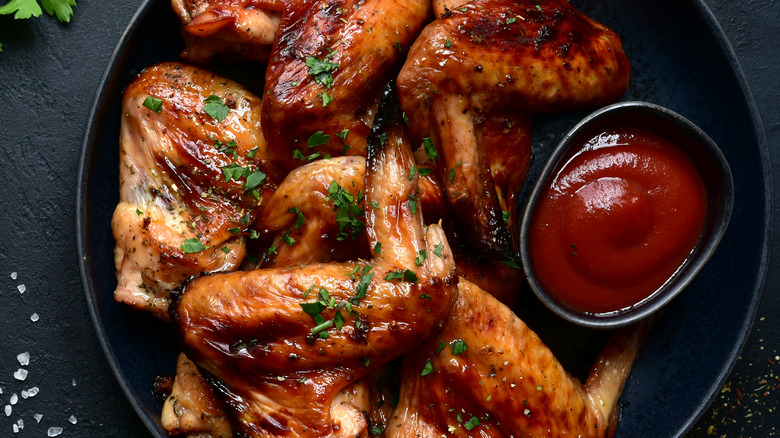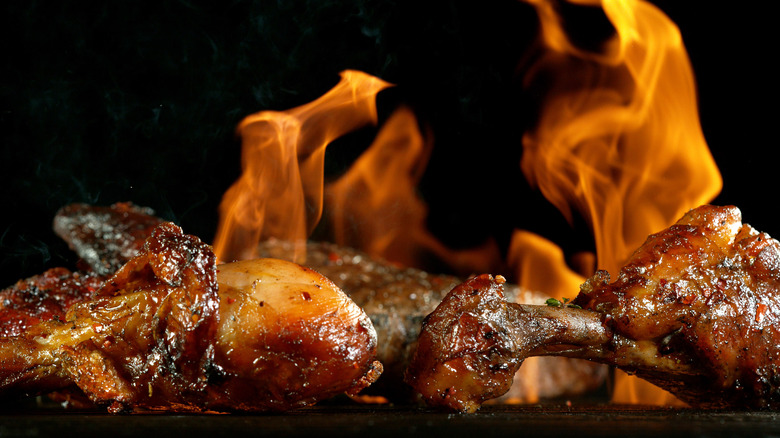What Happens When You Oil Your Grill Before Cooking Chicken Wings
One could make many potential mistakes when grilling chicken wings. Few things are worse than spending precious time, money, and a great wing recipe only to have to throw the food away after it gets stuck on the grates.
According to The Online Grill, one of the main reasons this happens is because the meat isn't hot enough. This is a factor because when the meat's proteins connect to the grill grates, it can only be released once its surface is dry enough to let go, which happens when it's hot.
Moisture outside the meat also plays a major part in sticking. The Online Grill also discusses how sauces that are high in sugar contribute to the seemingly cement-like bond the exterior of meats can sometimes have with grill grates. The official Char-Broil website suggests using a marinade with high oil content to help combat this issue without compromising flavor.
Many seasoned grillers, like cookbook author Meathead Goldwyn, will tell you that using oil outside of a marinade is the answer. But where you use it is debated — many are team "oil the grates," while others like Goldwyn are firmly on team "oil the meat" (via Huffington Post).
Oiling the grill grates can cause problems
Since oil is obviously an excellent lubricant, The Online Grill notes, and can provide the necessary slickness needed to prevent those chicken proteins from bonding to the grill, using it may seem like a no-brainer. But it's not as simple as just dousing the grill grates in canola oil and tossing on your wings.
As Meathead Goldwyn tells the Huffington Post, oiling the grates of a hot grill can cause smoking and carbonization. Many people think the added smoke isn't so tasty, and the carbonization can actually make the chicken stick more. And some oils, especially those with low smoke points like olive oil, break down when they're heated highly and could release chemicals that can potentially cause cancer, according to The Sydney Morning Herald. Olive oil can be fine for low-heat applications, but chicken wings need to be heated to a 165-degree internal temperature, according to the USDA website.
To make these potential side effects less likely, the better bet is to just lightly oil the surface of the wings and make sure to keep your grill grates clean.

